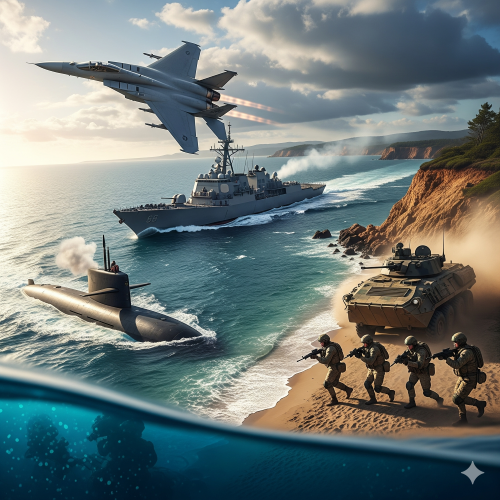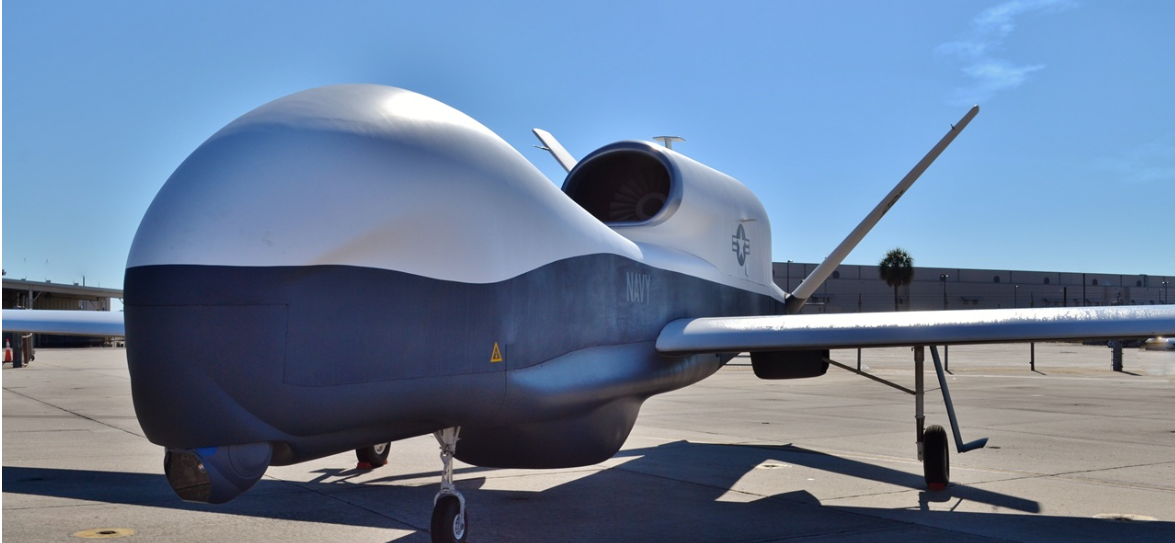How America’s MQ-4C Triton Drone Could Change Naval Warfare Forever

The MQ-4C is emblematic of a broader military shift in which endurance and routine monitoring missions are being outsourced to machines.
The emergence of the Northrop Grumman MQ-4C Triton represents a pivot in US and allied maritime operations from crewed patrol aircraft toward perpetual unmanned surveillance supported by artificial intelligence. Developed for the US Navy, the MQ-4C is a version of the RQ-4 Global Hawk adapted for the maritime environment. With exceptional endurance, advanced sensors, and the ability to integrate seamlessly with the manned Boeing P-8A Poseidon, the MQ-4C is changing the way navies monitor, deter, and respond across the world’s vast expanse of oceans.

What to Know About the MQ-4C Triton
- Year Introduced: 2023
- Number Built: ~6 delivered (early fleet); planned production ~60–70 for US Navy; several for Australia
- Length: 47.6 ft (14.5 m)
- Wingspan: 130.9 ft (39.9 m)
- Weight: ~14,628 kg (32,250 lb) max takeoff weight
- Engine: One Rolls-Royce AE 3007H turbofan (~8,500 lbf thrust)
- Top Speed: ~330 knots (380 mph, 610 km/h)
- Range: ~8,200 nmi (9,436 mi, 15,186 km)
- Service Ceiling: ~56,500 ft (17,220 m)
- Loadout: ~3,200 lb (1,450 kg) capacity; carries sensors, radars, EO/IR camera system, electronic support measures (ESM) for signals intelligence, Automatic Identification System (AIS) receiver for ship tracking. Unarmed.
- Aircrew: 0; operated remotely by ground station crew (mission commanders, sensor operators, and support staff)
The MQ-4C marks a significant milestone in the ongoing transition from manned to unmanned operations. For decades, maritime surveillance depended entirely on manned aircraft like the P-8 Poseidon, or the P-3 Orion before it. For these manned platforms, the weakest point was almost always the endurance of the crew itself: fatigue, human error, and finite time on station restricted how much surveillance these planes could actually conduct. The MQ-4C removes the human from the equation, resulting in surveillance limited only by the drone’s fuel capacity—meaning the platform can loiter far longer than any human crew while sweeping up vast datasets from a service ceiling of 56,000 feet.
The MQ-4C does not replace manned aircraft outright. Fundamentally, it acts as a force multiplier, shouldering the burden of routine wide-area surveillance and allowing manned platforms to perform higher-stakes, closer-in missions like anti-submarine warfare, direct strikes, or complex intelligence gathering. The newly emerging division of labor reflects the general strategic shift happening across advanced militaries, which are leveraging unmanned systems to augment the work of humans.
The Strategic Implications of Naval Surveillance Drones
The MQ-4C alters the strategic landscape in significant ways. For starters, the MQ-4C reduces or eliminates patrol gaps, meaning that adversaries can no longer count on operating in gaps between manned patrol flights; the MQ-4C can hold continuous watch, shrinking an adversary’s ability to maneuver undetected.
The unmanned nature of the MQ-4C lowers the political cost of presence. Deploying a manned patrol aircraft over disputed waters is an escalation risk, as Chinese interceptions of P-8 flights in the Indo-Pacific have demonstrated. The MQ-4C, on the other hand, operates without posing a risk of fatality to US service members, which lowers the threshold for green-lighting sustained surveillance in politically sensitive regions. Of course, the lower risk of escalation means that the drone itself is also more likely to come under threat; US and allied surveillance drones in the Black Sea have been endangered by aggressive Russian aerial maneuvers since the onset of the Ukraine conflict in 2022.
Last, the MQ-4C strengthens US alliances. The United States, Australia, and other partners are deploying the MQ-4C in shared basing arrangements, which expands surveillance coverage across the sprawling Indo-Pacific. The common operating picture enhances deterrence and complicates adversary planning.
The MQ-4C is emblematic of a broader military shift in which endurance and routine monitoring missions are being outsourced to machines. The move to unmanned maritime surveillance, backed by AI, reflects the recognition that information dominance is foundational to sea control. And as the US shifts its focus towards great power competition, especially with China, control of the seas will be especially important.
The embrace of AI surveillance is not without controversy, however. The ability to launch perpetual AI surveillance platforms is tied closely to fears of AI dominance. And the evolutionary trajectory of the technology seems intuitive enough: while the MQ-4C is built for intelligence gathering, one must expect unmanned platforms in the near-future to carry weaponry, with further potential consequences.
- Questions and Answers
- Opinion
- Motivational and Inspiring Story
- Technology
- Live and Let live
- Focus
- Geopolitics
- Military-Arms/Equipment
- Segurança
- Economy
- Beasts of Nations
- Machine Tools-The “Mother Industry”
- Art
- Causes
- Crafts
- Dance
- Drinks
- Film/Movie
- Fitness
- Food
- Jogos
- Gardening
- Health
- Início
- Literature
- Music
- Networking
- Outro
- Party
- Religion
- Shopping
- Sports
- Theater
- Health and Wellness
- News
- Culture

